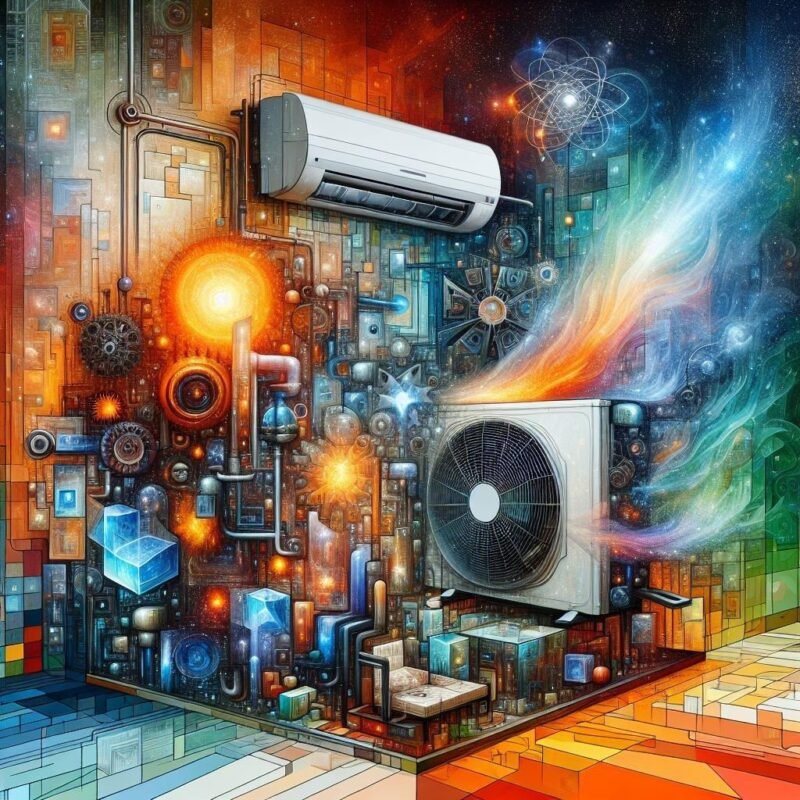Is professional installation required for a mini split AC system?

Picture this: you’re standing in your living room on a sweltering summer day, dreaming of cool comfort while staring at that sleek mini split AC system you just ordered online. The big question hanging in the air, along with all that humidity, is whether you should roll up your sleeves and tackle the installation yourself or call in the pros. It’s a dilemma that many homeowners face, caught between the allure of DIY savings and the peace of mind that comes with professional expertise. As someone who’s navigated these waters, let me walk you through the ins and outs of mini split installation, and help you decide whether to grab your tools or grab your phone to call an HVAC expert.
DIY Mini Split Installation: Unveiling the Hidden Challenges and Risks
Attempting to install a mini split system yourself might seem like an enticing way to save money, but there’s more than meets the eye. Behind those sleek indoor units and compact outdoor condensers lies a complex network of electrical connections, refrigerant lines, and precise measurements that demand expert attention. Even a minor mistake during installation can lead to significant performance issues, from inadequate cooling to complete system failure. Consider the intricate process of vacuum testing, which requires specialized equipment and expertise to prevent moisture contamination that could severely damage your unit.
Many homeowners discover the hard way that what seemed like a straightforward DIY project quickly becomes overwhelming. Common pitfalls include:
- Incorrect refrigerant charge leading to system inefficiency
- Improper line set installation causing refrigerant leaks
- faulty electrical connections posing fire hazards
- Inadequate mounting that risks unit collapse
- Void manufacturer warranty due to non-professional installation
| Risk Factor | Potential Consequence |
|---|---|
| DIY Installation | System failure, safety hazards |
| Professional Installation | Warranty coverage, optimal performance |
Mastering the Technical Requirements: Electrical Work, Line Sets, and Vacuum Testing
Getting your hands dirty with the technical aspects of mini split installation requires a solid understanding of electrical wiring, proper line set connections, and vacuum testing procedures.The electrical work involves dealing with 220V circuits, installing disconnects, and ensuring all connections meet local building codes. Line sets must be meticulously installed with the correct bends and slopes, properly insulated, and secured to prevent vibration. A single mistake in these areas can lead to system inefficiency, refrigerant leaks, or even complete system failure.
The vacuum testing phase is particularly critical and requires specialized equipment like a micron gauge and a quality vacuum pump. This process removes moisture and air from the system, which could or else cause internal corrosion or compressor damage.Here’s what you’ll need to tackle these technical requirements:
- EPA Section 608 certification for handling refrigerants
- Electrical knowledge for high-voltage wiring
- Specialized tools (vacuum pump, manifold gauges, flaring tools)
- Understanding of local electrical and HVAC codes
| task | Required Tools | Skill Level |
|---|---|---|
| Electrical Work | Voltage Tester, Wire Strippers | advanced |
| Line Set Installation | Flaring tool, Pipe Bender | Intermediate |
| Vacuum Testing | Micron Gauge, Vacuum Pump | Advanced |
When Professional Expertise Makes the Difference: Complex Scenarios and System Optimization
Certain mini split installations present intricate challenges that go beyond basic DIY capabilities. Think about multi-zone systems serving various rooms with different cooling requirements, or installations in historic buildings with strict preservation guidelines. These scenarios demand advanced technical knowledge, specialized tools, and a deep understanding of building codes and HVAC engineering principles. A certified professional can navigate complex refrigerant line configurations, ensure proper load calculations, and implement refined zoning strategies that maximize comfort while minimizing energy consumption.
System optimization is another critical aspect where professional expertise shines. Consider these key elements that require specialized knowledge:
- Advanced airflow management for optimal room coverage
- Integration with smart home systems and WiFi controls
- Custom refrigerant charge adjustments for peak efficiency
- Strategic placement of indoor units to eliminate dead zones
- proper condensate drain design to prevent water damage
| Installation Aspect | DIY Risk Level | Professional Advantage |
|---|---|---|
| Multi-Zone Setup | High | Optimal system balance |
| Smart Integration | Medium | Seamless connectivity |
| Performance Tuning | Very High | Maximum efficiency |
Smart Investment vs short-Term savings: Making the Right Choice for Your Mini Split Setup
When it comes to financing your mini split system, it’s essential to weigh the long-term benefits against immediate cost savings. While DIY installation might seem like a budget-friendly option,investing in professional installation often proves more economical over time. Professional setup typically includes warranties, reduces the risk of system damage, and ensures optimal performance from day one.
Consider these key financial aspects before making your decision:
- Energy efficiency optimization through proper installation
- Extended equipment lifespan with correct setup
- Warranty protection and service guarantees
- potential utility rebates for professional installations
| Investment Type | Initial Cost | Long-term Value |
|---|---|---|
| DIY Installation | Lower | Higher risk, potential repairs |
| Professional Install | higher | Better efficiency, warranty coverage |
Q&A
Q: What exactly is a mini split AC system?
A: Great question! A mini split AC system is a type of air conditioning that consists of two main components: an indoor unit that cools your space and an outdoor unit that dissipates the heat. It’s a versatile option that can efficiently heat or cool individual rooms without the need for ductwork!
Q: So,is professional installation really necessary for a mini split AC system?
A: While it’s possible to install a mini split yourself if you have the right tools and experience,we generally recommend bringing in the professionals.It’s a bit like trying to assemble IKEA furniture without instructions – it might look straightforward, but those little detours can really throw you off!
Q: What are the benefits of professional installation?
A: Many, my friend! First off, professionals have all the expertise and knowledge needed to ensure your system runs optimally. They can handle the refrigerant lines and electrical work safely, minimizing risks and maximizing efficiency. Plus,many manufacturers require professional installation for warranty validation – that’s peace of mind you can’t put a price on!
Q: Can I save money by installing a mini split myself?
A: It’s tempting to save a few bucks,but DIY installation can lead to costly mistakes down the line. Improper installation can result in inefficiencies, higher energy bills, or even damage to the system.Sometiems, investing a bit more upfront for professional help can save you money in the long run – not to mention prevent you from becoming a mini split installation expert overnight!
Q: What if I have some DIY experience? Could I attempt the installation?
A: If you’ve got solid DIY skills and a knack for home improvement projects, you might be able to tackle the job! Just be sure you’re fully aware of the licensing and local regulations surrounding HVAC work – some areas require certified professionals to handle certain aspects. But remember,if you hit a snag,it’s totally okay to call in the cavalry!
Q: Are there any scenarios where professional installation might not be necessary?
A: Yes,if you’re installing a single-zone mini split on a wall-mounted system and you have strong HVAC knowledge,it might be feasible.Just keep in mind the potential pitfalls that come with cutting corners. Also, always check if your system has any specific installation requirements that need a professional touch.
Q: How do I choose the right professional for the job?
A: Start by asking for recommendations from friends and family! research local HVAC contractors, check their reviews, and don’t hesitate to ask for quotes and references. You want someone who’s not only skilled but also friendly and willing to answer your questions – after all, this is your home we’re talking about!
Q: What’s the bottom line? Should I go for professional installation?
A: If you want efficiency, safety, and peace of mind, professional installation is the way to go! It’s an investment in comfort and can help your mini split system perform at its best. So sit back,relax,and let the professionals handle it – after all,they’re the mini-split magicians! 🌬️✨
Key Takeaways
deciding whether to opt for professional installation for your mini-split AC system ultimately hinges on your comfort level,expertise,and the specifics of your home. While a DIY approach can save you some cash, the peace of mind that comes with knowing a seasoned professional has handled the job can be well worth the investment. Just think of it as a cozy collaboration—your vision for a comfortably cool space meets the expertise of trained hands.
Whether you choose to roll up your sleeves or call in the pros, remember that your comfort is the ultimate goal.Here’s to enjoying those refreshing breezes all summer long,no matter how you choose to set it up! So,grab your sunglasses,kick back,and let that mini-split work its magic—as you deserve to chill out in style!






















